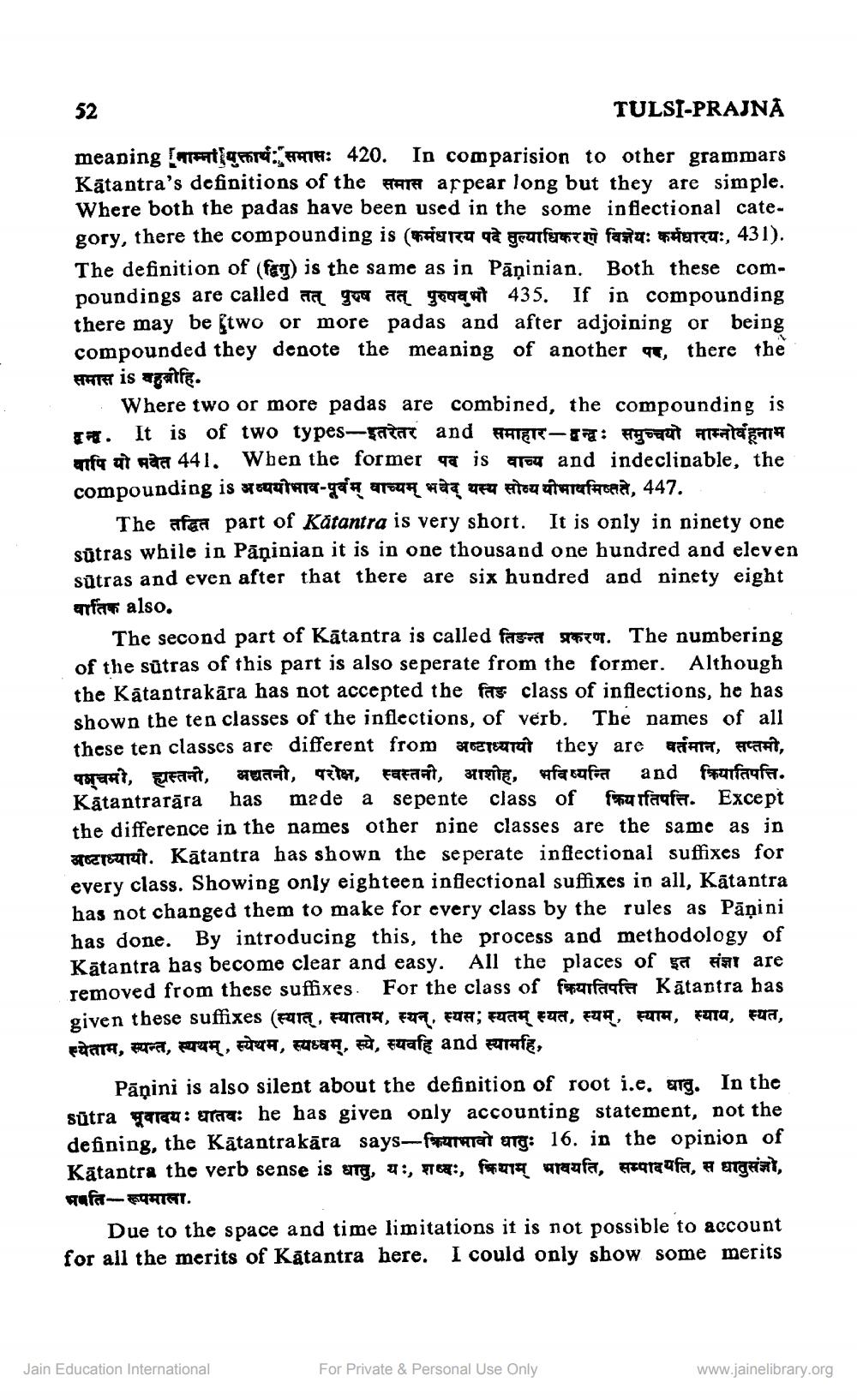________________
52
TULSI-PRAJNA
meaning [Tutarat: 420. In comparision to other grammars Katantra's definitions of the HATA appear long but they are simple. Where both the padas have been used in the some inflectional category, there the compounding is (Para gà gouferetu furat: furcu:, 431). The definition of (fay) is the same as in Pāņinian. Both these compoundings are called तत् पुरुष तत् पुरुषवुभौ 435. If in compounding there may be (two or more padas and after adjoining or being compounded they denote the meaning of another qe, there the #ry is agafe.
Where two or more padas are combined, the compounding is IT. It is of two types-aia and HATER-FT: Hysenit atan वापि यो मवेत 441. When the former पद is वाच्य and indeclinable, the compounding is segururu-guru wa ueu atoa tarefaat, 447.
The afer part of Kåtantra is very short. It is only in ninety one sūtras while in Pāṇinian it is in one thousand one hundred and eleven sūtras and even after that there are six hundred and ninety eight वातिक also.
The second part of Kātantra is called fasrat TT. The numbering of the sūtras of this part is also seperate from the former. Although the Kātantrakāra has not accepted the fas: class of inflections, he has shown the ten classes of the inflections, of verb. The names of all these ten classes are different from अष्टाध्यायी they are वर्तमान, सप्तमी, पञ्चमी, हास्तनी, अद्यतनी, परोक्ष, स्वस्तनी, आशोह, भविष्यन्ति and क्रियातिपत्ति. Kātantrarāra has made a sepente class of fog fagfer. Except the difference in the names other nine classes are the same as in
Creat. Kātantra has shown the seperate infectional suffixes for every class. Showing only eighteen infectional suffixes in all, Kātantra has not changed them to make for every class by the rules as Pānini has done. By introducing this, the process and methodology of Katantra has become clear and easy. All the places of gast are removed from these suffixes. For the class of farfaafa Kātantra has given these suffixes (Fara, FUTAIA, FUTA, FUA; FATA FUR, FTH, FATA, rata, fara, स्येताम, स्यन्त, स्ययम् , स्येथम, स्यध्वम्, स्ये, स्यहि and स्यामहि,
Pāṇini is also silent about the definition of root i.e. arg. In the sūtra gareu: Stra: he has given only accounting statement, not the defining, the Kātantrakāra says-ferrarat arg: 16. in the opinion of Kātantra the verb sense is arg, a:, T:, f014 araufa, igraofa, # angånt, nafa HIGT.
Due to the space and time limitations it is not possible to account for all the merits of Kātantra here. I could only show some merits
Jain Education International
For Private & Personal Use Only
www.jainelibrary.org




